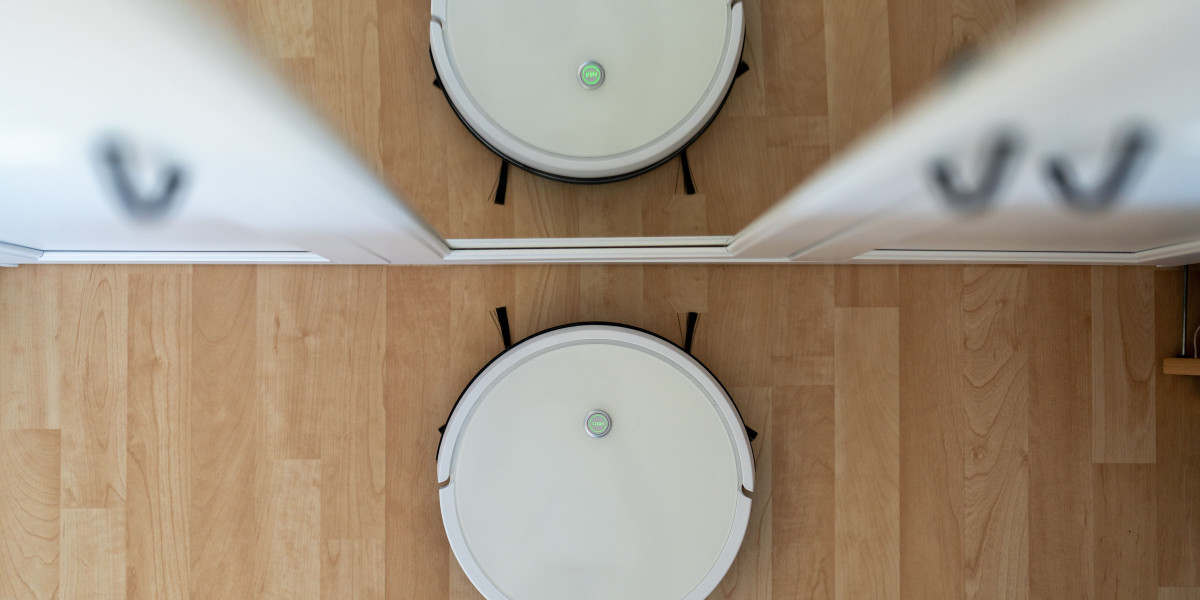How to Maintain a Robot Vacuum and Mop
A robot vacuum and mop will aid in keeping your floors spotless on a regular basis. Set it to run on a set schedule, and you can come home to squeaky-clean floors with no effort on your part.
The majority of robot vacuums that mop can be controlled and scheduled through an app. Some robot vacuums come with self-emptying bins and many utilize a microfibre pad which can be washed as needed.
1. Simple to use
Robot vacuums and mops have been designed to be easy to use and maintain. However it's important to recognize that they can't do all the cleaning for you. You'll need to clean your own house from time to time. Additionally, you might need to replace components such as filters or wheels. Follow the recommended maintenance schedule provided by the manufacturer for best results.
This could take a few weeks. This could take a few weeks. During this process, it may bump into items or even hit walls. You can stop this from happening by creating "no-go zones" using the app. You can adjust settings like mopping and suction power by using the app after your robot is mapped.
The app will also inform you know when your equipment require replacement or cleaning. This will ensure that your robot stays running smoothly and efficiently for many years. Depending on the amount of time used, some accessories will wear out faster than others. For instance, the brushes on a robot vacuum will need to be replaced every six months. To increase airflow, the filter of a robot vacuum needs to be cleaned at least once a week. Remove the filter from the vacuum and tap it on a surface to remove any debris that is loose. Rinse the filter with cold water until it's clean. Let it dry before replacing it.
Before you disassemble your robot, it's a good idea to consult the user's manual for specific instructions on how to clean and troubleshoot. You'll only require just a few tools: a trashcan, a microfiber towel as well as a brush (an old toothbrush is ideal), and a pair scissors. It is a good idea to schedule a weekend once every month to do these tasks to ensure the best performance. After handling any parts that are dirty clean your hands using soap and warm water to clean. This will help prevent the risk of injury and contamination to yourself or your robot.
2. All kinds of flooring can be used
The most effective robot mops are flexible enough to be used on hard and tile floors. Some models come with a selection of disposable or reused mop pads that are able to be used wet or dry. The pads are usually machine washable to keep them clean and fresh. Some robot mops come with reservoirs of water that can be filled with your favorite cleaning solution. Others utilize cleaners that are sold by the company. They also come with a variety of settings available for mopping and sweeping.
Most robot mops are able to clean under low furniture, along edges, and in areas that are cluttered. They also can become stuck on small items. It is crucial to clean the space before you start cleaning. Also the mops might have to stop charging or empty their water tanks and you will need to be home at the period.
Most robot vacuum and mop makers provide a cleaning map to aid you in planning your space. You can mark areas and rooms that you do not want the robot to clean. This will inform the robot to stay away. Most robot mops also have a no-mop zone feature within their app that allows you to block off carpeted areas.
If you have hard flooring and carpets, choose a robot vacuum reviews that can mop and vacuum at the same time. When we conducted our Yeedi robot mop and vacuum tests it was awe-inspiring in its ease of navigation through the pre-mapped space, adapting to obstacles and not missing any areas. It also had a broad range of mopping options and was able to work on ceramic tiles, hardwoods and carpeted stairs. The robot was simple to setup and sync, and it didn't leave evidence of wet floors. It did, however, have a difficult time with an area rug. It had to reverse course, eventually and ended up under it, but was able to free itself without our assistance.
The iRobot Combo j7+ is our top-rated robot mops and another great choice for homes that have various surfaces. It's the first 2-in-1 model to have an entirely retracting mop pad that allows the robot to lift off rugs and carpets to prevent messy carpets caused by wetness. It also comes with smart iRobot OS 5.0 upgrades that increase intelligence and customization.
3. Easy to empty
No matter if you have a robotic mop or vacuum, it needs to be easy to empty and maintain. Otherwise, you'll be busy with other tasks to keep it running. That's why most robots come with a self-emptying trash bin that allows you to easily throw away the contents. This may seem like an insignificant convenience, but can make a big difference to your experience.
The filter of a robot cleaner is another important feature. It traps dust and dirt. This ensures that your floors are as clean as is possible and stops dust from recirculating back into the air. It is recommended to choose models that have an HEPA filter that will catch the tiniest particles and leave your home with a clean atmosphere.
In addition to the HEPA filter, certain models also have a reusable water tank and a mop pad that means you don't need to purchase disposable cleaning solutions. This will reduce the amount of waste in your home and also save money over time.
When shopping for a robot cleaner, take into consideration the size of your home and how much space you have available for the unit's base and dustbin. The more space you have, you will have to move the machine less frequently.
It is also recommended to review the model prior to buying it. This will give you a better sense of the reliability and what sort of problems it's likely to face. It's also an excellent idea to determine whether or not it has remote control or an app, which can be helpful in planning and monitoring its progress.
The advantages of a robotic cleaner are well worth the cost, particularly when you consider the fact that they can be completely hands-free. You can save a lot of time if you are a busy parent trying to manage kids, work and other tasks. Be sure to check the battery and see if there is a low-charge indication before you purchase.
4. Easy to maintain
Depending on the model you are using, cleaning the dustbin or filter is a simple process, while taking the main brush off and washing it could be more complicated. It is important to clean the robot sensors, particularly those that help to navigate around your home and avoid obstacles. It is recommended that you remove these and wipe them down with a clean microfiber cloth every so often or use a mild cleaning solution that's safe for this type of equipment.
The primary sensor on robot vacuums is responsible for directing dirt into its dustbin but it is also prone to becoming tangled in hair and other debris. Most models allow you to take out this part for simple cleaning. Scrubbing for a few minutes using a microfiber towel could mean the difference between your device working as intended or not at all.
When using a robot mop, it is equally important to wash and dry mopping pads and cloths regularly. This will stop bacteria from growing on the damp pads or cloths which could cause your floors to smell and make them less effective. Many manufacturers recommend washing the mopping pads and cloths in cool water and allowing them to dry in the air before reusing them.
The wheels of the robot and its front bumper should also be cleaned regularly. Over time, they can collect hair and dirt, making it difficult for the robot to move. These parts can be cleaned gently with a microfiber towel, but not too wet. You can also use a toothbrush or soft-bristled brush to access difficult-to-reach places.
The camera on the robot is a different piece of equipment that is simple to clean. It is found on most models, and it is responsible for taking pictures of your space. Typically, this is used to map, allowing the robot to create no-mop zones and schedules. The camera can be wiped with a dry, clean microfiber cloth or with a slightly damp melamine foam sponge. Make sure you read your manual for specific directions on this.








